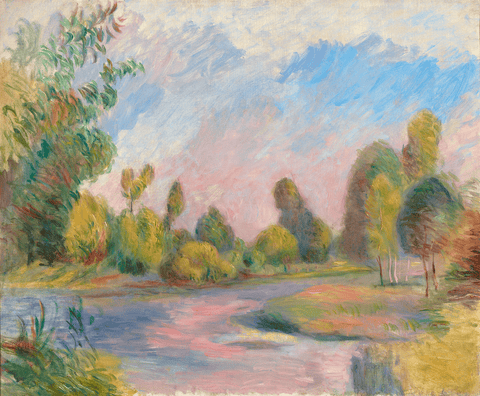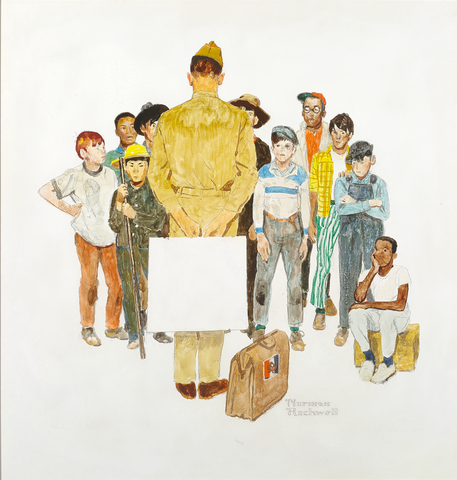Art is difficult to define and can be challenging to experience because it can bring out strong emotions, both positive and negative. But, to create or to experience art is arguably the most unique of all human endeavors. Works of art can leave lasting impressions or feelings on an individual, inspire them to reflect, or even take action. But, perhaps most compelling is art’s ability to help shape or influence our collective consciousness.
Art is to the community what the dream is to the individual. — Thomas Mann
The idea of a collective consciousness was developed by French sociologist Emile Durkheim, who researched the new industrial societies of the late 19th century. The idea reflects “...the set of shared beliefs, ideas, attitudes, and knowledge that are common to a social group or society.”
Dr. Nicki Lisa Cole explains, “It is through collective consciousness that values, beliefs, and traditions can be passed down through the generations. Though individual people live and die, this collection of intangible things... are cemented... and thus exist independent of individual people.”
If we approach this idea literally, visual artworks are tangible. However, artworks are also concepts, images and memories. Most of us will only have the opportunity to view Michelangelo’s
David, Rembrandt’s
The Night Watch or van Gogh’s
The Starry Night once in our lives, if at all. Perhaps we’ve only seen images of them in school, films or online. Yet, miraculously, each of us can easily conjure a mental image of any of those works, in addition to da Vinci’s
The Last Supper, Picasso’s
Guernica, Dali’s
The Persistence of Memory and so many more. This is powerful because it binds humanity together —providing a common knowledge or experience for people who otherwise might have little in common. And that gives us hope!
During this trying moment, we wanted to showcase a selection of artworks from our collection that demonstrate art’s ability to bring people together and to lift us up. While they might not be globally recognizable works of art, we love that a simple portrait, still life or landscape can evoke a sense of shared humanity. We hope you enjoy the selection!

Afternoon Tea for Three by Charles-Joseph-Frédéric Soulacroix
RITUAL
Rituals can provide structure to our days and our lives, and give us something to look forward to. Tea time is one such ritual that acts to bring family or friends together for a light meal and exchange of conversation. Prevalent in the United Kingdom since the mid 19th century, tea for many is a casual, quotidian affair. However, there is no harm done in elevating the tradition into a formal, fantastic occasion. Such is the case for the glamorous sitters in Charles-Joseph-Frederic Soulacroix’s
Afternoon Tea for Three. A prominent member of the so-called 19th-century
Silks and Satins School, Soulacroix paints with the utmost attention to texture and sheen. While the garments and interiors of Soulacroix’s scenes give off the air of aristocracy, the youthful, playful expressions of his figures allow them to feel both timeless and relatable.
https://rauantiques.com/collections/paintings/products/au-bord-de-la-riviere-by-pierre-auguste-renoir?variant=33131799085191
SERENITY
Is there anything more soothing than a beautiful landscape bathed in delicate, colorful light? We tend to associate nature with an ability to put our worries to the wayside and live in the present. With over half of the world’s population living in cities, nature also represents an escape from the persistent clatter of the city. To be in nature is akin to a big, relaxing exhale. Few artists capture the immediacy of this feeling like Pierre-Auguste Renoir. Working
en plein air enabled the painter to capture this serene, yet fleeting scene entitled
Au Bord de la Riviere so that it could be embraced by posterity.

Au Bord de la Rivière by Pierre-Auguste Renoir
PATRIOTISM
This vibrant gouache was commissioned by the French government in 1919 from famed artist Raoul Dufy just after World War I. Entitled
Emprunt 6% Souscrivez (War Loan 6% Subscribe), the painted was reproduced as posters to help galvanize the French people to support post-war reconstruction. As is suggested by the titled, the government invited its people to purchase war bonds with a healthy 6% guaranteed return on investment. The artist creatively showcases the various industries the bonds would support, namely shipping via railroads and steamboats, urban development, manufacturing and more. The subject matter is less lighthearted in nature than the paintings for which Dufy is most known. Nonetheless, it is unexpected and uplifting to see an artist known for his whimsical painting technique tackle the task of rallying France to invest in its future.

Boypower Manpower by Norman Rockwell
CAMARADERIE
So many men look back on their childhood with fond memories of their days as Boy Scouts.
Boypower Manpower by beloved American illustrator Norman Rockwell embodies the sense of camaraderie that the Boy Scouts provide. And, more broadly speaking, the painting speaks to the idyllic sentiments of youth. The painting’s title comes from the 1968 Boy Scout membership campaign whose slogan pronounced, “America’s manpower begins with BOYPOWER.”

The Education of Achilles by Auguste-Clément Chrétien
MYTHOLOGY
Much like famous works of art, mythology represents a collective culture that so many of us have grown up with and share. However, mythology involves stories rather than images. That is why it is so compelling when artists bring to life stories we have long been told and/or envisioned in our mind’s eye. This exquisitely painted Salon
artwork depicts the Greek god Achilles learning how to shoot a bow and arrow, as instructed by Chiron the centaur. Achilles’ concentration is palpable; we can only assume the same could be said of French 19th-century painter Auguste-Clement Chretien when creating this masterwork.

Sir Winston Churchill by Ivor Roberts-Jones
LEADERSHIP
In times of uncertainty, we all look towards and depend upon fearless leadership to give us confidence in our futures. Beloved by countless of his contemporaries and exponentially more in the present day, Sir Winston Churchill was the ultimate leader in times of hardship. This striking maquette is the miniature of one of England’s most recognized monuments: the famed Ivor Roberts-Jones’ sculpture of Churchill at Parliament Square in London. The subject also believed in the power of art; it is well known that he turned to painting as an outlet for the strains of office and of war during his tenure as Prime Minister.
Sources: https://www.thoughtco.com/collective-consciousness-definition-3026118
 |
|
About the Author
Susan Lapene
A 25-year sales veteran, Susan Lapene is head of the Fine Jewelry Department here at M.S. Rau. A proud, native New Orleanian, Susan was educated at the University of New Orleans in Fine Arts and attended the Gemological Institute of America, or GIA, where she received her certification in Diamonds, Diamond Grading, Colored Stones and Jewelry Essentials. Susan has spent over 10 years in sales in the jewelry industry, and our customers have come to rely on her expertise and uncanny eye for beauty since she joined the M.S. Rau family in 2005.
Email Susan at Susan@rauantiques.com.
|









